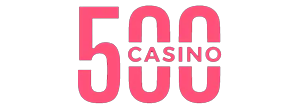Blackjack Player Decisions
The wise words of Kenny Rogers are known by gamblers all over: “You’ve got to know when to hold ‘em / Know when to fold ‘em / Know when to walk away.” And while you don’t exactly fold your cards in blackjack, the general sentiment of the song still applies. To play blackjack effectively, you have to know when to make key decisions with the hand you’ve been dealt.
You want to do everything you can to get your hand to total as close to 21 without going over, and the variety of player decisions are meant to help you (hopefully) get there.
First things first: After the first cards are all dealt out, either at a brick-and-mortar casino or an online casino, the dealer will start with the first player on their left. The dealer will then stay with that player until they stand or bust (go over 21). When that first player is finished with their hand, the dealer moves on to the next player and goes around the table this way.
This means that your decisions have to come quickly after each new card in your hand is revealed. You usually have only a few seconds, so you need to be familiar with what your options are and what they mean.
Our guide to blackjack player decisions works to clarify each option you have, why you might want to choose each one, and how to make it work.
Hit
If your first two cards total only 9, then you’ll definitely want to get at least another card in your hand to try to get closer to 21. When you want to take another card from the dealer, this is to hit. Then the dealer will give you another face-up card.
If you’re just playing at home, you can tell your dealer the words “hit me,” and you’ll be fine. But if you’re playing in a brick-and-mortar casino, you’ll have to use hand signals instead. This is useful because casino floors can be loud and it helps the dealer to clearly understand what you want, and the casino’s cameras can more clearly see a hand signal so that they have a record of every player’s decision.
The hand signal for “hit” is to either scrape your cards against the table or to tap the table with your finger.
Stand
Maybe your hand totals 18 right now. If you take any more cards, you’ll risk busting (going over 21). So this means you’ll want to stand. The dealer will now stop dealing you cards and will move on to the next player at the table.
The hand signal for “stand” is to slide your cards under your chips or to wave your hand horizontally.
Split
Maybe your first two cards were both 8s. Whenever your first two cards are of the same value, you have the option to split them into two separate hands. You can then add a second bet equal to your first. The dealer will now treat each card as its own hand, dealing additional cards to each.
It can get extra-thrilling if you get a third card of that same value (say, a third 8). Some casinos allow you to re-split and play them all now as three hands. Other casinos don’t allow re-splits, so try to see what the table’s rules are about that.
Why should you split? In general, it increases your chances of beating the dealer and making extra profits.
The hand signal for “split” is to place additional chips next to your original bet, outside of the betting box. Then, point with two fingers in a V formation.
Double Down
This is when you decide to double the size of your original bet before the dealer gives you a third card. After you double down, the dealer will give you only one card and settle all bets at the end of the hand.
Doubling down is effectively showing such confidence in your hand that you feel you’re almost guaranteed to win because you can’t bust and you’re more likely to win than the dealer. There are three scenarios when it would make sense to double down:
- You have a hard 9 and the dealer’s face-up card is valued at only 2-6.
- You have a hard 10 or 11 and the dealer’s face-up card is lower than that.
- You have a soft 16, 17, or 18 and the dealer’s face-up card is valued at only 2-6.
There are times when you definitely should not double down, and that includes when you have anything higher than 11. The chances of busting are just too high to risk it. Another scenario to never double down is when the dealer is showing an ace. Their likelihood of hitting blackjack is far too high.
The hand signal for “double down” is to place your additional chips next to your original bet, outside of the betting box. Then point with one finger to signal that you want one more card.
Surrender
If you see that the dealer’s face-up card has a value of 10 (it’s either a 10 or a face card) or is an ace, you might have concerns that your chances of winning the hand are already just too low. You may then want to take the option to surrender, in which you’ll keep half of your original bet and give up your hand. This way, you don’t run the risk of playing a hopeless hand and losing your entire bet.
Being able to surrender does impact the house edge slightly in your favor. This is why some casinos don’t offer players the option of surrendering, or they at least don’t blatantly advertise it on their table rules. You’ll have to ask the dealer if surrendering is an option.
No matter what, there are no hand signals for “surrender” — you have to request it verbally when you want to do it.
Early Surrender
This is a less commonly allowed form of surrender, but it can be handy to you if the casino lets you try it. (You’re more likely to find it in online casinos than brick-and-mortar casinos.) In early surrender, you can opt out of the hand before the dealer checks their own hand for blackjack.
If you’re allowed early surrender, it drops the house edge by 0.24% against a 10-value card and by 0.39% against an ace. Considering that blackjack already has a relatively low house edge (less than 1% if you’re using some proper blackjack strategy), this has a significant impact on how much money the house can generally take from you.
Late Surrender
Late surrender is the more commonly allowed form of surrender. This is when you opt out of the hand after the dealer checks their own hand for blackjack.
Late surrender leads to a 0.07% to 0.09% reduction in the house edge. This is less significant than the early surrender numbers, but you should take anything you can get when it comes to dropping that house edge.
Insurance
If the dealer does have an ace as their face-up card, this means the dealer has a fairly good chance of hitting blackjack. The dealer will ask you if you want insurance. This is when you can bet up to half of your original stake as a side bet.
If the dealer does, in fact, reveal a value-10 card to get blackjack, you’ll win back that insurance bet but not your original stake. If the dealer doesn’t get blackjack, you’ll lose the insurance bet no matter what. You may still win your original stake if you do beat the dealer’s hand.
In the end, taking insurance isn’t really worth it. The 2/1 price isn’t big enough to offset what would be only a 30% (or less) chance of the dealer actually having blackjack.
Making the Right Decisions in Blackjack
As you can see, there’s more to blackjack than just hitting or standing. It might feel like you have an array of tricky options to choose from, but don’t let pressure or the fear of losing money cloud your judgment.
Remember that you’re really only playing against the dealer, and you need to worry about just the cards in front of them versus your own hand. Don’t fret about what other players at your table are doing, and make the decision that seems right for your current hand.
If you need help knowing when to hit, stand, split, or surrender, take a look at our breakdown of proper blackjack strategy to know exactly what to do.


